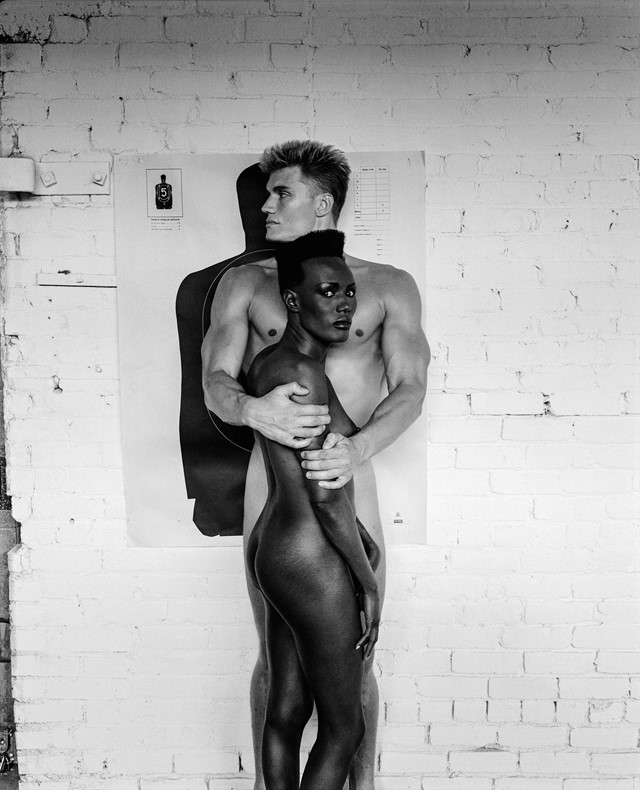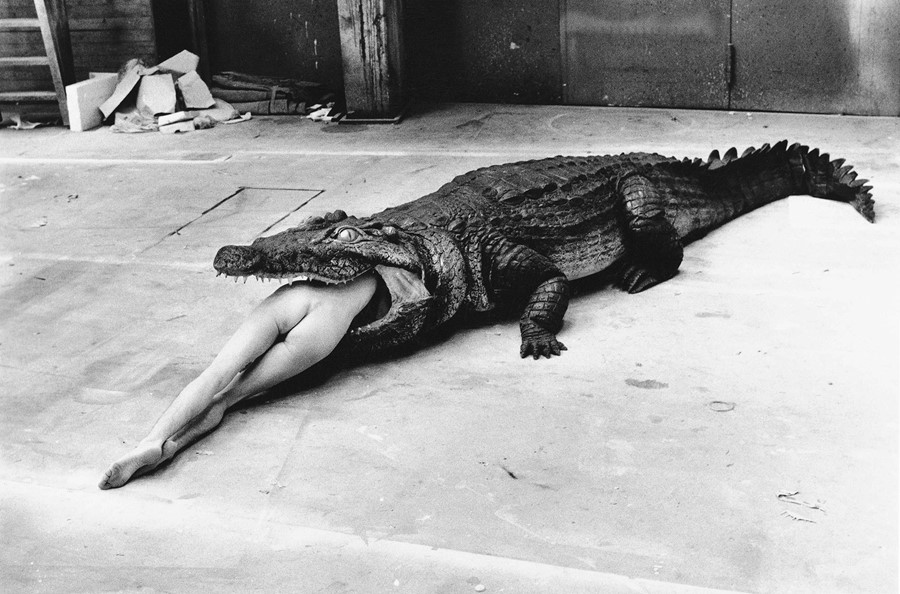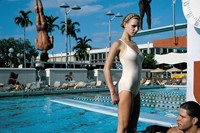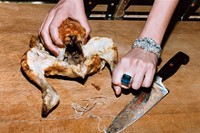Arriving in the UK next week, Gero von Boehm’s insightful documentary Helmut Newton: The Bad and the Beautiful is a new look at photography’s “enfant terrible”
Helmut Newton would have turned 100 this month, so a new documentary celebrating his life and work arrives with impeccably poignant timing. Directed by journalist and filmmaker Gero von Boehm, a friend of the late provocateur and his widow June, Helmut Newton: The Bad and the Beautiful doesn’t offer an impartial analysis of the man who was often described as photography’s “enfant terrible” and sometimes “the king of kink”. The only substantive criticism of the somewhat fetishistic way Newton depicted women in photographs for Vogue, Harper’s Bazaar and other publications comes from an archive clip in which feminist icon Susan Sontag tells Newton she dislikes his work. There’s little doubt the “bad” in this film’s title means “a little bit naughty” as opposed to anything actively malignant.
Still, this bias doesn’t stop Von Boehm’s film feeling insightful – far from it. The director’s affection for his subject is palpable and seems to provoke candour from Newton in fly-on-the-wall footage shot several years before his death on January 23, 2004. “I must say I miss him very much every day,” Von Boehm says touchingly when I interview him over Zoom shortly before the documentary’s UK release.
A mix of affection and reverence for the photographer is also a recurring theme in Von Boehm’s fascinating new talking-head interviews with some of the prominent women he shot. Charlotte Rampling, Claudia Schiffer, Isabella Rossellini, Marianne Faithfull and others pay tribute to his greatness as a photographer and playfulness as a collaborator. When Grace Jones describes Newton as “a little bit perverse”, she immediately qualifies this observation by saying: “But so am I, so it’s OK.” Vogue’s Anna Wintour says she used his photographs as “a stopper” in her magazines because she knew they’d be powerful enough to stop readers from idly flicking through the pages.
Helmut Newton: The Bad and the Beautiful’s all-female cast list is very much by design. “Why did I pick ten women? Because there were almost no statements from women about Helmut,” Von Boehm says matter-of-factly. “There were many brilliant scholarly essays by male journalists, male gallerists and male curators – and there were some anecdotes from [female] assistants he’d worked with – but I’d rarely heard women speak or write about him. So I thought: ‘Why not give carte blanche to women who really knew him well and had worked with him?’”

Though Von Boehm was adamant he wanted to speak to “Newton’s women”, he admits he didn’t know what to expect. “I was really interested in what they would say about him and his photography because they and their bodies were the subjects,” he says. “I did think: ‘Would they see themselves as objects?’” But in fact, Von Boehm says he was “astonished” by the details they recalled and says many viewed their Newton shoots as a career milestone. Citing Newton’s iconic nude photograph of Rampling taken at Paris’s Hotel Du Nord in 1973, Von Boehm says: “It was the beginning of something big for both of them and Charlotte told me this photo gave her a feeling of immense power. She said her whole career would have gone differently without this one photo. And Marianne Faithfull and Grace Jones told me similar things.”
Though Newton’s unapologetically erotic images were always controversial – Sontag calls him a “misogynist” who “humiliates women” – the photographer was bold enough in a 2001 interview to claim he is a “feminist”. Does Von Boehm agree? “There’s something completely right about it because at least he wanted to show us how strong women are,” the director says. He then cites Newton’s famous diptych Sie Kommen (Dressed) & Sie Kommen (Naked), in which he presents four women dressed in high-fashion outfits next to the same four women wearing nothing at all. “What does the photo tell us?” Von Boehm asks rhetorically. “That strong women are strong women even without haute couture – they don’t need it. And this is, if you will, a kind of feminism.”
Whatever your take on Newton’s work, there’s no denying that Von Boehm’s film captures the photographer’s impish personality. It also shows his loving relationship with his wife June, a talented photographer in her own right who uses the professional pseudonym Alice Springs. And crucially, Von Boehm doesn’t shy away from exploring how Newton, a Jewish boy who grew up in Nazi Germany, was influenced by Leni Riefenstahl’s photographic propaganda depicting athletic Aryan bodies as an aspirational ideal.
When I suggest that the way Newton died in 2004 age 83 was strangely poetic, Von Boehm agrees. “His death was tragic but also fitted into his whole story. He was at the Chateau Marmont in Hollywood and he was on his way to shoot some beautiful girls on the beach at Santa Monica when he had a heart attack at the wheel,” he says. “But I do think if he hadn’t died, he could have gone on working for many more years to come. Helmut definitely wasn’t finished yet.”
Helmut Newton: The Bad and the Beautiful is on Curzon Home Cinema and Digital Download from October 23, 2020.






